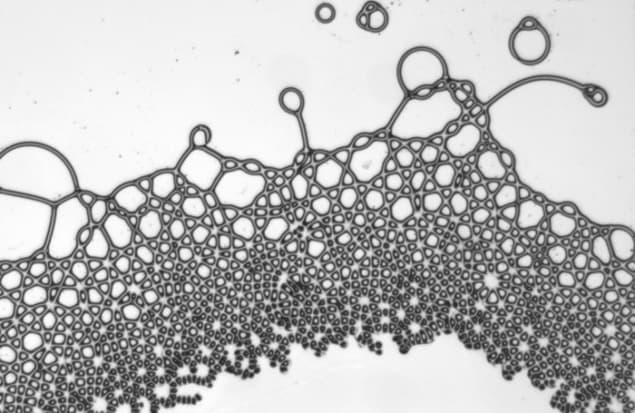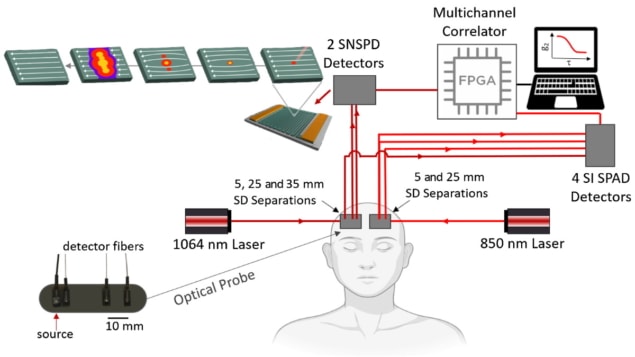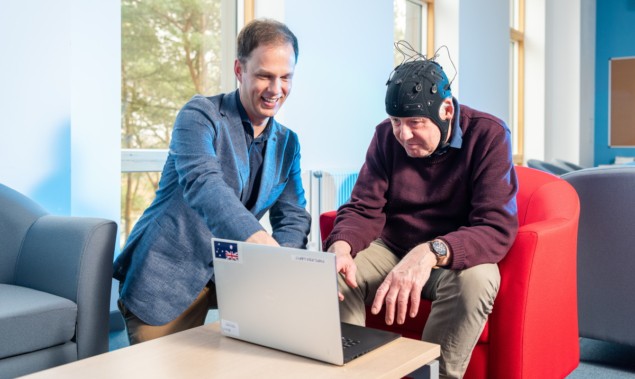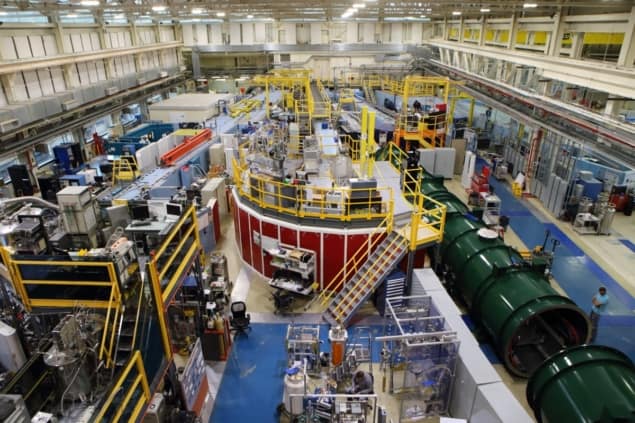In this episode of the Physics World Weekly podcast the historian Alex Wellerstein explains how the US has kept its nuclear secrets since the Second World War. The author of Restricted Data: the History of Nuclear Secrecy in the United States, he explains how the country has walked the fine line between trying to prevent rogue actors from developing weapons and encouraging the peaceful use of nuclear technologies.
Αναζήτηση αναρτήσεων
Πέμπτη 30 Σεπτεμβρίου 2021
Quantization By Branes And Geometric Langlands Lecture 2 by Edward Witten
Knot Categorification From Mirror Symmetry (Lecture- 3) by Mina Aganagic
Knot Categorification From Mirror Symmetry (Lecture- 3) by Mina Aganagic
QUANTUM FIELDS, GEOMETRY AND REPRESENTATION THEORY 2021 (ONLINE)
ORGANIZERS: Aswin Balasubramanian (Rutgers University, USA), Indranil Biswas (TIFR, india), Jacques Distler (The University of Texas at Austin, USA), Chris Elliott (University of Massachusetts, USA) and Pranav Pandit (ICTS-TIFR, India)
Geometric Satake Correspondence For Affine Lie Groups (Lecture- 3) by Hiraku Nakajima
Geometric Satake Correspondence For Affine Lie Groups (Lecture- 3) by Hiraku Nakajima
Twisted S-duality by Philsang Yoo
Twisted S-duality by Philsang Yoo
A mini-course on vertex operator algebras of N= 2 Superconformal Field (Lecture 2) by Madalena Lemos
A mini-course on vertex operator algebras of N= 2 Superconformal Field (Lecture 2) by Madalena Lemos
Coulomb Branches for Quiver Gauge Theories With Symmetrizers by Alex Weekes
Coulomb Branches for Quiver Gauge Theories With Symmetrizers by Alex Weekes
QUANTUM FIELDS, GEOMETRY AND REPRESENTATION THEORY 2021 (ONLINE)
ORGANIZERS: Aswin Balasubramanian (Rutgers University, USA), Indranil Biswas (TIFR, india), Jacques Distler (The University of Texas at Austin, USA), Chris Elliott (University of Massachusetts, USA) and Pranav Pandit (ICTS-TIFR, India)
Geometry Of The Hitchin Integrable Systems, And Some Variations (Lecture 2) by Jacques Hurtubise
Geometry Of The Hitchin Integrable Systems, And Some Variations (Lecture 2)
by Jacques Hurtubise
PROGRAM : QUANTUM FIELDS, GEOMETRY AND REPRESENTATION THEORY 2021 (ONLINE)
ORGANIZERS : Aswin Balasubramanian (Rutgers University, USA), Indranil Biswas (TIFR, india), Jacques Distler (The University of Texas at Austin, USA), Chris Elliott (University of Massachusetts, USA) and Pranav Pandit (ICTS-TIFR, India)
Τετάρτη 29 Σεπτεμβρίου 2021
Asymptotic Dimension by Mladen Bestvina
Asymptotic Dimension by Mladen Bestvina
Virtual colloquium by Prof. Mladen Bestvina
(University of Utah)
Video link: https://youtu.be/36IiCRTNxSs
Τρίτη 28 Σεπτεμβρίου 2021
ΒΙΤΑΜΙΝΕΣ Για Την Μνήμη & Καλή Μάθηση! [ΠΟΛΥ ΧΡΗΣΙΜΟ]
ΒΙΤΑΜΙΝΕΣ Για Την Μνήμη & Καλή Μάθηση! [ΠΟΛΥ ΧΡΗΣΙΜΟ]
Κυριακή 26 Σεπτεμβρίου 2021
Electric fields cause square droplets and liquid lattices to appear in oil mixtures
Electric fields cause square droplets and liquid lattices to appear in oil mixtures
26 Sep 2021
When a simple system of two liquids is driven out of equilibrium, it can generate a far more diverse array of structures than previously thought, new experiments have shown. The discovery was made by Jaakko Timonen, Nikos Kyriakopoulos and colleagues at Aalto University in Finland, who identified structures including filaments, lattices, and square-shaped droplets, when applying electric fields to thin sheets of different combinations of conductive, polarizable oils.
Σάββατο 25 Σεπτεμβρίου 2021
Quantum Simulations With Trapped Ions (Lecture - 2) by Christian Roos
Quantum Simulations With Trapped Ions (Lecture - 2) by Christian Roos
How the US keeps its nuclear secrets and what it reveals, double anonymous peer review boosts inclusion
How the US keeps its nuclear secrets and what it reveals, double anonymous peer review boosts inclusion
23 Sep 2021 Hamish Johnston
Why fusion power could rely on high-temperature superconductors, China’s ambitious exploration of space
Why fusion power could rely on high-temperature superconductors, China’s ambitious exploration of space
02 Sep 2021 Hamish Johnston
In this episode of the Physics World Weekly podcast I chat with Erica Salazar of the Massachusetts Institute of Technology, who is developing high-temperature superconductor magnets for the next generation of fusion reactors. She explains why these materials could help make the dream of fusion power come true and why the magnets must be protected from a potentially damaging effect called quenching.
Meet the new Astronomer Royal for Scotland, using fun and humour to teach physics
Meet the new Astronomer Royal for Scotland, using fun and humour to teach physics
03 Jun 2021 Hamish Johnston
The astrophysicist Catherine Heymans has made history by becoming the first female Astronomer Royal for Scotland, an office that was created in 1834. In this episode of the Physics World Weekly podcast, she talks about her new role and how she will use it to show that science is relevant to everyone. One initiative she has planned will ensure that every primary school pupil in Scotland has the opportunity to peer at the sky through a telescope.
Observing the weather on brown dwarfs, powerful laser puts matter under extreme conditions
Observing the weather on brown dwarfs, powerful laser puts matter under extreme conditions
13 May 2021 Hamish Johnston
This Sunday, 16 May, is the UNESCO International Day of Light so this episode of the Physics World Weekly podcast focuses on the humble photon and some of the amazing science and technology that it makes possible.
Our first guest is the astronomer Megan Tannock of Canada’s University of Western Ontario, who talks about brown dwarfs – objects that are too small to be stars, but are larger than planets. She explains how researchers observe the weather on brown dwarfs to determine how fast the objects are spinning – which turns out to be very fast, according to a recent study by Tannock and colleagues. She also talks about whether brown dwarfs could have planets of their own and whether some of these planets could harbour life.
Ultracold circuits for quantum computing, graphene boosts sustainability, secrets of supercooled water
Ultracold circuits for quantum computing, graphene boosts sustainability, secrets of supercooled water
27 May 2021 Hamish Johnston
Creating a quantum computer that integrates a large number of components is a huge challenge for many reasons. One is that most quantum bits (qubits) used today must be chilled to near absolute zero and therefore isolated from the room-temperature electronic components used to control them. This makes it extremely difficult to have large numbers of qubits and controllers packed into a small space. But researchers in the Netherlands may have a solution, as the science writer and educator Karmela Padovic-Callaghan explains in this episode of the Physics World Weekly podcast.
Balloon-borne telescope will ‘weigh’ the universe, remembering John Enderby
Balloon-borne telescope will ‘weigh’ the universe, remembering John Enderby
12 Aug 2021 Hamish Johnston
If you built a very expensive telescope, would you hitch it to a balloon and fly it 40 km above the surface of the Earth? That is what Mohamed Shaaban at the University of Toronto and an international team will do next year when they launch their SuperBIT telescope on NASA’s superpressure balloon. Shabaan explains why the team is putting their telescope on a balloon and how the instrument will be used it to study gravitational lensing, which could improve our understanding of how much dark matter there is in the universe.
Free and open-source software is driving physics forwards
Free and open-source software is driving physics forwards
22 Sep 2021 James Dacey
In this episode of the Physics World Stories podcast you will hear from scientists and software engineers at the vanguard of developing free and open-source software for physics research. Guests talk about the role of open software in astronomical imaging, the search for dark matter, medical physics and other fields. Software also plays a big role in the wider open-science movement but there are ongoing debates around how to provide suitable recognition to software developers who have contributed to scientific breakthroughs.
Superconducting nanowire detectors accurately estimate blood flow in the brain
Superconducting nanowire detectors accurately estimate blood flow in the brain
20 Sep 2021 Jigar Dubal
The amount of blood flowing through the cerebral arteries and veins can strongly influence brain function, as it impacts both oxygen delivery and removal of waste products from the brain. As such, medical professionals utilize cerebral blood flow (CBF) as a marker of a patient’s cerebrovascular function.
EEG test could enable early diagnosis of Alzheimer’s disease
EEG test could enable early diagnosis of Alzheimer’s disease
25 Sep 2021 Tami Freeman
A new memory assessment technique could pave the way for earlier diagnosis of Alzheimer’s disease, the underlying cause of around 60% of dementia cases. The approach uses electroencephalography (EEG) to measure brain activity while participants watch flashing images on a computer screen.
Amateur astronomers capture flash from asteroid impacting Jupiter
Amateur astronomers capture flash from asteroid impacting Jupiter
24 Sep 2021
 |
Five amateur astronomers from South America and Europe have captured a burst of light on Jupiter that was the result of an asteroid crashing into the planet’s atmosphere. It is thought that the flash on 13 September – known as a meteor “bolide” – may have been created by a body tens of metres across. It is only the seventh time in history that observers have recorded an impact flash on the gas giant.
Out of equilibrium dynamics of complex systems-4 by Leticia Cugliandolo
Out of equilibrium dynamics of complex systems-4 by Leticia Cugliandolo
Παρασκευή 24 Σεπτεμβρίου 2021
Golden eclipse wins Astronomy Photographer of the Year, dancing atoms and molecules, tactile illusions
Golden eclipse wins Astronomy Photographer of the Year, dancing atoms and molecules, tactile illusions
24 Sep 2021 Hamish Johnston
Chinese photographer Shuchang Dong has beaten thousands of amateur and professional photographers from around the world to win the 2021 Astronomy Photographer of the Year. The award – now in its 13th year – is run by the UK’s Royal Observatory Greenwich in association with insurer Liberty Specialty Markets and BBC Sky at Night Magazine. Dong’s image – The Golden Ring – depicts the annular solar eclipse that occurred on 21 June 2020 and was taken in Ali in Tibet using a Fujifilm XT-4 camera.
Non-Hermiticity: A New Paradigm for Model Building in Particle Physics by Peter Millington
Non-Hermiticity: A New Paradigm for Model Building in Particle Physics by Peter Millington
Introduction to open quantum systems-5 by Manas Kulkarni
Introduction to open quantum systems-5 by Manas Kulkarni
Ultralow-frequency neuromodulation safely relieves chronic pain
Ultralow-frequency neuromodulation safely relieves chronic pain
24 Sep 2021
Chronic pain, classified as persistent pain that lasts longer than three to six months, remains an area of considerable unmet medical need. A new treatment that uses electrodes to deliver alternating pulses of ultralow-frequency (ULF) current could help address this need. In a pilot trial, the treatment improved pain ratings by as much as 90% after 15 days of use. Unlike existing clinical neuromodulation techniques, this ULF approach avoids tissue damage and other side effects.
Πέμπτη 23 Σεπτεμβρίου 2021
Neutron experiment tightens the net around possible fifth force
Neutron experiment tightens the net around possible fifth force
17 Sep 2021
An improved search for a potential fifth force of nature is one of a trio of new results gleaned from observations of neutron interactions in silicon made by an international team of physicists. The work, which relies on Pendellösung interferometry, also takes a precise look at silicon’s thermal properties and provides a new, independent value for the neutron’s charge radius.
Introduction to Statistical field theories of athermal systems-5 by Bulbul Chakrabarty
Introduction to Statistical field theories of athermal systems-5 by Bulbul Chakrabarty
Τετάρτη 22 Σεπτεμβρίου 2021
Introduction to Statistical field theories of athermal systems by Bulbul Chakrabarty
Introduction to Statistical field theories of athermal systems by Bulbul Chakrabarty
PROGRAM : BANGALORE SCHOOL ON STATISTICAL PHYSICS - XII (ONLINE) ORGANIZERS : Abhishek Dhar (ICTS-TIFR, Bengaluru) and Sanjib Sabhapandit (RRI, Bengaluru) DATE : 28 June 2021 to 09 July 2021 VENUE : Online Due to the ongoing COVID-19 pandemic, the school will be conducted through online lectures. This advanced level school is the twelfth in the series. This is a pedagogical school, aimed at bridging the gap between masters-level courses and topics in statistical physics at the frontline of current research. It is intended for Ph.D. students, post-doctoral fellows and interested faculty members. The following courses will be offered. Introduction to Statistical field theories of athermal systems by Bulbul Chakrabarty (Brandeis University,
Εγγραφή σε:
Αναρτήσεις (Atom)





